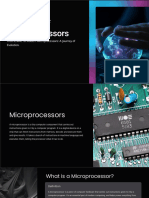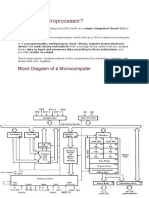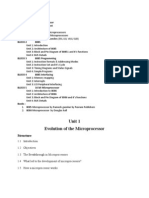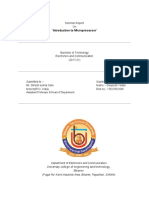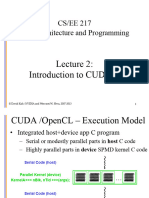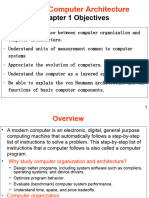0% found this document useful (0 votes)
71 views5 pagesHistory of Microprocessor
The document traces the history and evolution of microprocessors from their inception in 1971 with the Intel 4004, highlighting key advancements and milestones across five generations. It discusses the impact of microprocessors on technology and society, their diverse applications, and the challenges faced in their development. Recent innovations focus on performance, energy efficiency, and specialization for emerging technologies, shaping the future of computing.
Uploaded by
Alyanah VicencioCopyright
© © All Rights Reserved
We take content rights seriously. If you suspect this is your content, claim it here.
Available Formats
Download as DOCX, PDF, TXT or read online on Scribd
0% found this document useful (0 votes)
71 views5 pagesHistory of Microprocessor
The document traces the history and evolution of microprocessors from their inception in 1971 with the Intel 4004, highlighting key advancements and milestones across five generations. It discusses the impact of microprocessors on technology and society, their diverse applications, and the challenges faced in their development. Recent innovations focus on performance, energy efficiency, and specialization for emerging technologies, shaping the future of computing.
Uploaded by
Alyanah VicencioCopyright
© © All Rights Reserved
We take content rights seriously. If you suspect this is your content, claim it here.
Available Formats
Download as DOCX, PDF, TXT or read online on Scribd
/ 5




